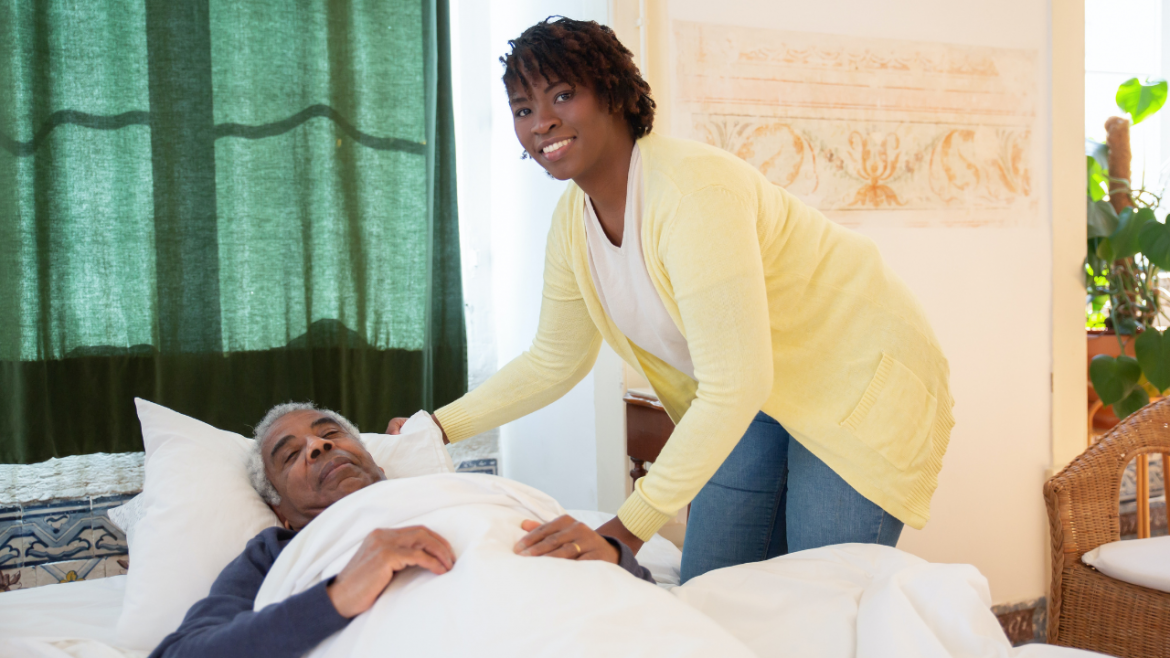Did you know that Leading Edge Senior Care has a Dementia Support Group? We meet monthly in Mesa. For more details <click here>
The Best Time To Reposition A Bed-Bound Senior
The Best Time To Reposition A Bed-Bound Senior
Caring for a bed-bound senior demands the utmost attention and sensitivity. Repositioning, or changing the patient’s position regularly, is crucial for preventing bedsores, ensuring comfort, and maintaining overall health. Understanding the best times to reposition a bed-bound senior can significantly impact their well-being. Here’s a comprehensive guide to help caregivers provide optimal care.
Morning Routine:
In the morning, begin with repositioning to kickstart the day. Gently change the senior’s position to prevent stiffness and promote blood circulation. Use this time to engage in conversation, fostering emotional connection.
After Mealtime:
Reposition the senior after meals to prevent discomfort and aid digestion. It’s advisable to wait for a bit after eating, ensuring the food has settled, then gently change positions, offering a sense of relief.
Before Bedtime:
Repositioning before bedtime is crucial. It sets the tone for a peaceful sleep, reduces the risk of bedsores, and ensures the senior goes to bed in a comfortable position, enhancing the quality of their rest.
During Personal Care Routines:
Use moments when the senior receives personal care, such as bathing or changing diapers, to reposition them. This multitasking approach respects the senior’s time while addressing their comfort needs effectively.
After Medical Procedures:
If the senior undergoes medical procedures or examinations, seize the opportunity to change their position afterward. This practice prevents stiffness and ensures they recover from the procedures comfortably.
Regular Intervals:
Intervals between these routine repositions are vital. Generally, aim for every two hours, but individual needs vary. Observing the senior’s reactions and physical condition can guide the frequency of repositioning.
Transitioning Between Activities:
Repositioning during transitions between activities, such as moving from the bed to a wheelchair, offers a chance to change positions naturally. It ensures the senior adapts comfortably to different settings, promoting mobility.
Utilize Mobility Aids:
Employ specialized aids like bed rails and slide sheets to facilitate repositioning. These tools not only make the process easier for caregivers but also enhance safety and minimize discomfort for seniors.
Catering to Preferences:
Respect the senior’s preferences and bodily cues. Some may have specific positions they find more comfortable. By understanding their preferences, caregivers can tailor the repositioning process, enhancing the senior’s overall experience.
Regular Skin Checks:
Alongside repositioning, conduct regular skin checks. Look for redness, pressure sores, or any signs of discomfort. Addressing these issues promptly ensures that the repositioning routine remains effective in preventing bedsores.
Engage in Meaningful Activities:
Repositioning moments can be transformed into meaningful interactions. Engage the seniors in conversation, read to them, or play soothing music. These activities not only provide mental stimulation but also create positive associations with repositioning times.
Consult with Caregivers:
Regularly consult healthcare professionals, such as nurses or physiotherapists, for guidance. They can offer personalized advice based on the senior’s health condition, ensuring the repositioning routine aligns with their specific needs.
In conclusion, the best time to reposition a bed-bound senior encompasses various moments throughout the day. By integrating repositioning into daily routines, respecting preferences, and engaging in meaningful interactions, caregivers can transform this essential task into a positive and comforting experience. This holistic approach ensures the senior’s physical and emotional well-being, making the caregiving journey more enriching for both the senior and their caregivers.

